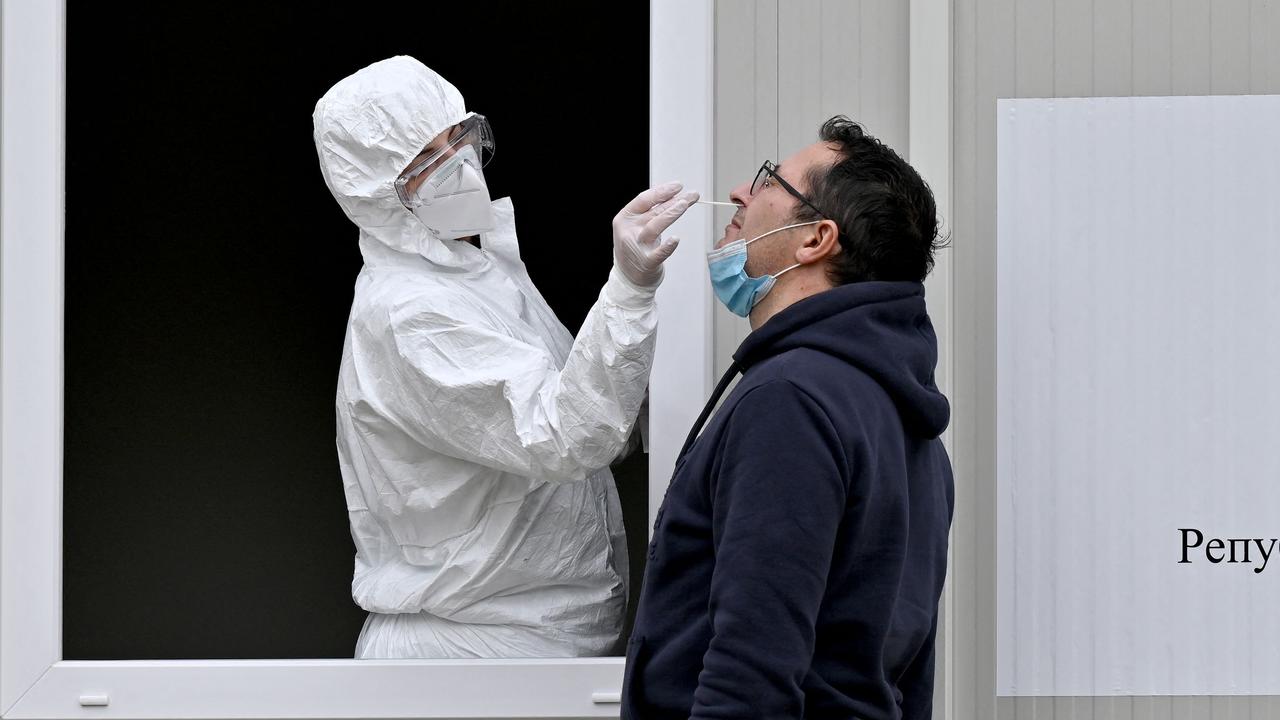Coronavirus inquiry hears hit on economy faster than Great Depression
Health Minister Greg Hunt has revealed there were only 12 cases of coronavirus identified across Australia in 24 hours – with only one case from an unknown source. It comes as an inquiry was told the economic shock from the virus outpaced the Great Depression.
UK ‘worried’ about virus-linked illness in kids
Australia shatters coronavirus curve
Aussie zoos to get almost $100m in help
Europe looks to ease lockdowns
There were only 12 cases of coronavirus identified across Australia in the 24 hours to 6.30am (AEST) today – with only one case from an unknown source. And that, Health Minister Greg Hunt, said is a “privilege to raise”.
“Only one case of community transmission across Australia. That is perhaps the most important figure I have had the privilege of raising since coming into this role and dealing with the coronavirus issue,” Mr Hunt told reporter this afternoon.
“It means that as a country we are not just flattening the curve but we are consolidating it, extending it and securing it.”
Mr Hunt said Australia had recorded 100 new cases in seven days and 6727 cases in total, with 85 lives lost. The latest death was a NSW aged care resident. No other details have been provided.
He confirmed there are currently 111 hospital admissions for coronavirus, 43 patients in ICU and 27 others on ventilators.
Nearly 530,000 tests have been conducted in Australia earning us the reputation “as the most accurate testing nation of the 83 nations around the world” by The London School of Hygiene and Tropical Medicine, Mr Hunt said.
He also confirmed as of 12.30pm today (AEST), 2.4 millions Australians had downloaded and registered for the COVIDSafe contact tracing app.
COVID-19 HIT ON ECONOMY SWIFTER THAN DEPRESSION
Some jobs and businesses lost during the coronavirus crisis will be gone “permanently” treasury officials have warned, revealing employment in hardest hit industries fell by 25 per cent in just three weeks.
Treasury Secretary Dr Steven Kennedy told a Senate inquiry into the federal government’s COVID-19 response new data showed unemployment was expected to hit 10 per cent in Australia for the June quarter.
“In accommodation and food, and arts and recreation services, the number of jobs fell by 25.6 per cent and 18.7 per cent respectively, over the three weeks between 14 March and 4 April,” he said today.

“Unemployment rose to higher levels in the Great Depression but it did that over the course of a couple of years, these movements are happening in just a couple of months.”
Dr Kennedy said Australia had “never” seen an economic shock of the “speed, magnitude and shape” of the coronavirus crisis.
“The supply of goods and services has been badly disrupted by the necessary social distancing measures,” he said.
“Demand, in turn, is being reduced by the associated loss in incomes and profits and loss of confidence.”
Dr Kennedy said the “final shape” of the economic impact of coronavirus was hard to predict because it depended on how successful efforts to suppress it, both in Australia and overseas, ultimately are.
“Over time, the uncertainty around the progression of the virus will diminish and more economic activity will return,” he said.
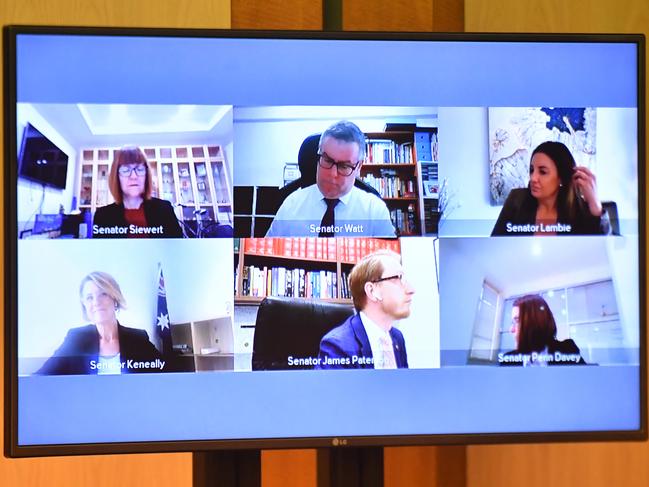
“But new challenges will have emerged. Some jobs and businesses will have been lost permanently.”
Dr Kennedy said all levels of government had “substantially lessened” the economic impact of the social distancing measures by acting decisively and early.
“They have collectively taken a balanced approach to preventing activities likely to spread the virus while allowing other activities to continue where possible,” he said.
“This has meant that in Australia we have been able to continue a wider range of economic activities, such as construction, manufacturing and mining.
“For some countries, they have not had a choice but to act more aggressively.”
Treasury confirmed more than 540,000 businesses had enrolled in the government’s JobKeeper wage subsidy program as at 2pm (AEST) Monday, with early estimates suggesting that covered about 3.3 million workers.
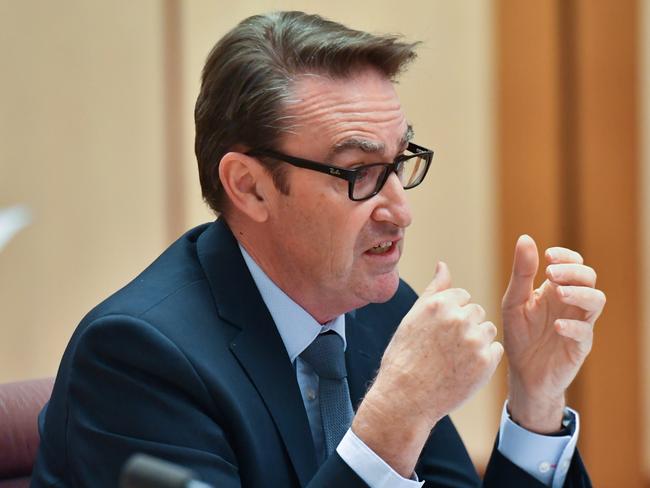
It comes as states started to ease restrictions.
New South Wales will ease gathering restrictions from Friday (May 1). A maximum of two adults and their children will be permitted to visit others in their homes. Bondi and Bronte beaches have reopened for exercise only while Tamarama beach is only open for locals. Students will return to classrooms by mid-term following a staged return during the first fortnight.
Queensland will ease restrictions from Saturday (May 2). Family picnics and weekend drives allowed, national parks will reopen and people can shop for clothing and shoes. Citizens must stay within 50km of their homes, and social distancing will still be enforced. People from the same household can go out together, while those who live alone can spend time with one other person. There will be no change to schools until at least May 15 with students continuing to learn remotely where they can.

Western Australia started to ease restrictions on Monday. The state has a two-person limit on non-work activities, including picnics, boating, hiking, camping. Group exercise was eased from two to 10 people, provided they adhere to social distancing and good hygiene. Weddings and funerals can have up to 10 people present. In real estate, open houses and display villages permitted but records must be kept of everyone who enters a home. Students will return to the classroom from May 29.
In the Northern Territory, parks and reserves will reopen this weekend. Cafes and gyms are expected to reopen in June, but under strict rules. The territory’s borders will be the last things to be lifted.
South Australia health officials are looking at which restrictions can be lifted after a fifth consecutive day of no new coronavirus cases.
In Victoria, restrictions will be reassessed on May 11 when the state of emergency ends.
Tasmania and the ACT won’t follow the lead of other states in easing social restrictions.

UK ‘WORRIED’ ABOUT VIRUS-LINKED ILLNESS IN KIDS
A new mystery illness hitting children in the UK with COVID-19 like symptoms has sparked British health authorities to order an urgent review.
The rise of the potential threat against children has caused concern, with coronavirus previously thought to give children only mild symptoms.
Doctors in London have been alerted to watch out for the rare illness, amid fears of a new strain of the disease.
“There is a growing concern that a Sars CoV-2 (COVID-19) related inflammatory syndrome is emerging in children in the UK, or that there may be another, as yet unidentified, infectious pathogen associated with these cases,” the alert to doctors said.
“Please refer children presenting with these symptoms as a matter of urgency.”
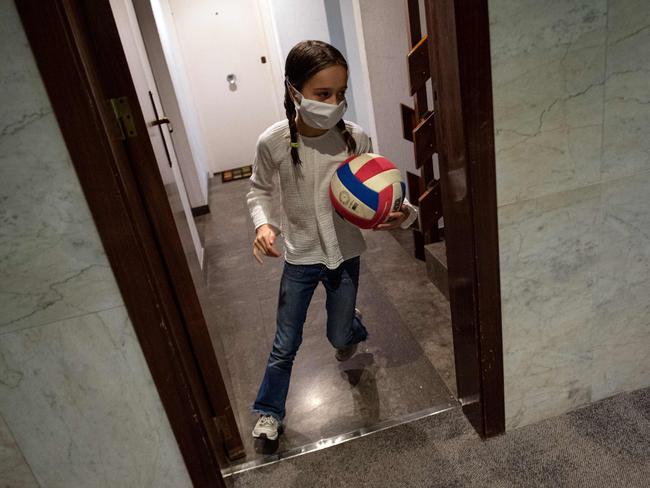
The illness also causes stomach pain, gastro and heart inflammation, the alert said.
Doctors were warned it may have similar symptoms to Kawasaki disease, which affects children under five and commonly includes a high temperature for five days.
There have been reports of cases in London and other parts of the UK.
A separate alert from the Paediatric Intensive Care Network confirmed the issue.
Professor Stephen Powis, the national medical director of England’s public health service, said he had ordered an investigation into the coronavirus-related syndrome.
“We have become aware in the last few days of reports of severe illness in children which might be a Kawasaki-like disease,” he said.
“We have asked our experts, I have asked the National Clinical Director for Children and Young People to look into this as a matter of urgency.”
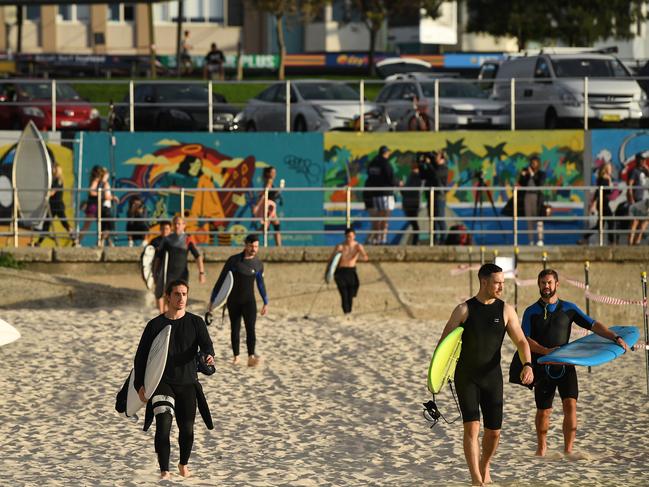
Any threat of a new virus would put a major strain on the UK’s health system, which has already dealt with more than 21,000 deaths.
Very few serious cases of coronavirus had been recorded in children, although a five-year-old had died of the illness in the UK.
Professor Chris Whitty, the chief medical adviser to Boris Johnson’s government, said there was a possible link, but urged caution.
“This is a very rare situation but I think it is entirely plausible that this is caused by this virus, at least in some cases,” he said.
“Because we know that in adults who of course have much more disease than children do, big problems are caused by an inflammatory process and this looks rather like an inflammatory process, a rather different one.
“Therefore, given that we have got a new presentation of this at a time with a new disease, the possibility – it is not a definite, we need to look for other causes as well – but the possibility that there is a link is certainly plausible.”
ZOOS GET ALMOST $100 MILLION FOR ANIMAL WELFARE
Meanwhile, zoos and aquariums across Australia will get almost $100 million in federal funding to help them through the COVID-19 crisis.
The $94.6 million will be used to pay for the cost of caring for animals and keep the operations afloat until travel and other coronavirus restrictions are eased.
Federal Tourism Minister Simon Birmingham says zoos and aquariums have seen their revenue streams dry up during the crisis.
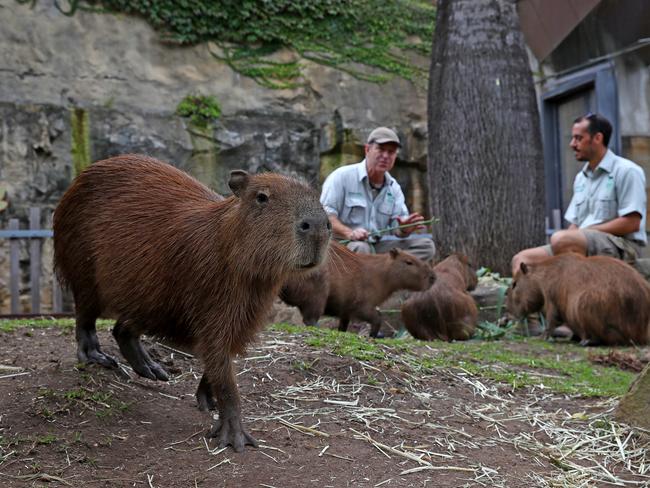
“It’s absolutely crucial our iconic zoos and aquariums can still operate on the other side and play a major role in helping our tourism industry to recover from this,” he said in a statement on Tuesday.
Australia’s zoos and aquariums attract more than 20 million visitors a year. Eligible zoos and aquariums will have access to grants that contribute up to six months of animal welfare operating costs.
The funding is part of the government’s $1 billion Relief and Recovery Fund to support regions, communities and industry sectors disproportionately affected by COVID-19.
WHO CHIEF SAYS PANDEMIC ‘FAR FROM OVER’
The head of the World Health Organisation (WHO) says the coronavirus pandemic is “far from over” and is still disrupting normal health services, especially life-saving immunisation for children in the poorest countries.
Tedros Adhanom Ghebreyesus lashed out at the world for “not listening carefully” to the agency’s warnings about coronavirus as early as January 30.
He said the UN agency had sounded the highest level of alarm over the coronavirus early on, but was dismayed that not all countries heeded its advice.
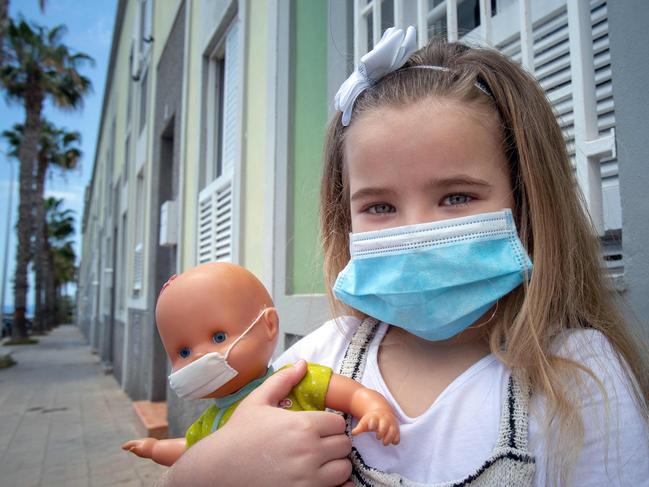
He added that coronavirus had constituted a “Public Health Emergency of International Concern” on January 30, when there were only 82 cases registered outside China.
“The world should have listened to WHO then carefully,” he said.
The UN agency is concerned about rising numbers of cases and deaths in Africa, eastern Europe, Latin America and some Asian countries even as the numbers flatten or decline in some wealthier countries.
“We have a long road ahead of us and a lot of work to do,” the WHO Director-General said during a virtual news conference in Geneva on Monday (local time), adding that a second wave of infections could be prevented with the right actions.
The coronavirus, which emerged late last year in the central Chinese city of Wuhan, has already infected more than three million and claimed more than 206,000 lives.
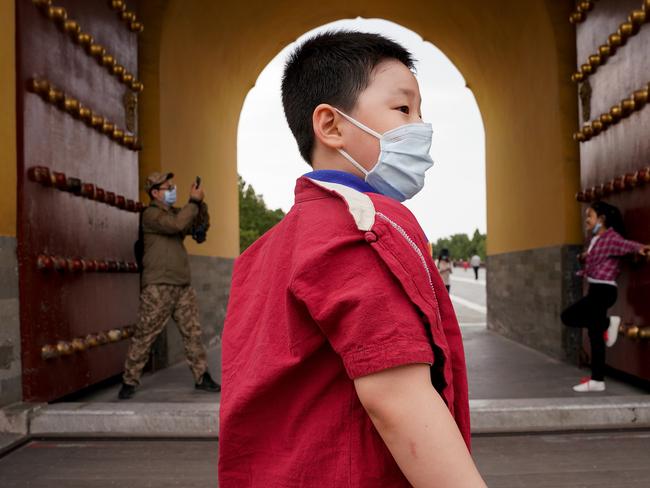
Tedros expressed concern that the health of children was being threatened by the impact of the coronavirus emergency on vaccination programs for other diseases.
“Children may be at relatively low risk from severe disease and death from COVID-19 – the respiratory illness caused by the novel coronavirus – but can be at high risk from other diseases that can be prevented with vaccines,” Tedros said.
About 13 million people have been affected worldwide by delays in regular immunisations against diseases including polio, measles, cholera, yellow fever and meningitis, he said.
EUROPE LOOKS TO EASE LOCKDOWNS
It comes as European countries took fresh steps towards charting a path out of virus lockdowns on Monday (local time) as debates rage over how quickly to ease safety measures that are suffocating ordinary and economic life.
In Britain, Prime Minister Boris Johnson returned to work after his own battle with the respiratory disease, looking thinner and with his trademark blonde mane a bit longer.
The pandemic has killed over 206,000 people and infected nearly three million worldwide, according to official statistics, with the US hit the hardest.
But Europe’s four worst-affected countries have all recently reported marked drops in their daily death tolls, raising hope that the peaks of their outbreaks have passed.

Italy and New York have laid out partial reopening plans while France and Spain are expected to follow suit this week.
In Switzerland, shops were already back in business Monday while primary students in Norway returned to school.
Yet Mr Johnson warned it was too early for the UK to ease off its month-long stay-at-home orders.
In his first public appearance in weeks, the 55-year-old said he could not “throw away all the effort and the sacrifice of the British people and to risk a second major outbreak”.
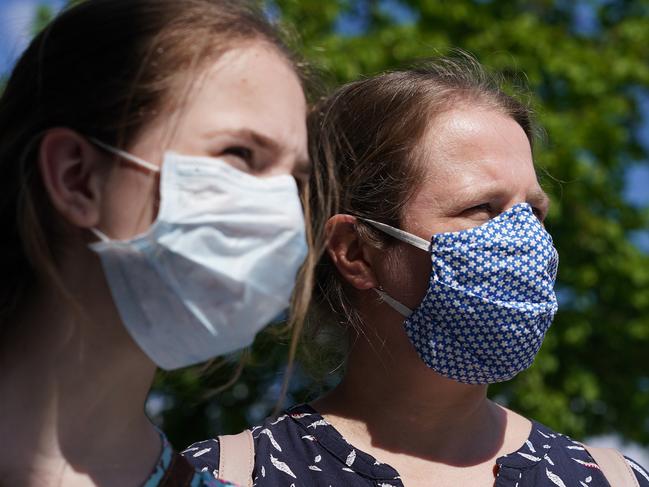
More than 20,000 people have been killed by the virus in the UK, with Mr Johnson’s government still facing criticism for being slow to impose safety measures at the start of the outbreak.
Elsewhere leaders and experts are divided over how to revive badly bruised economies and free citizens from confinement without unleashing new waves of infections.
Economic forecasts warn of the worst recession in a century, with oil prices plunging amid a supply glut.
In the US, where President Donald Trump did not give his daily coronavirus briefing on Sunday after complaining they were not worth the effort, states are moving at different paces to roll back confinement measures that have wiped out millions of jobs.
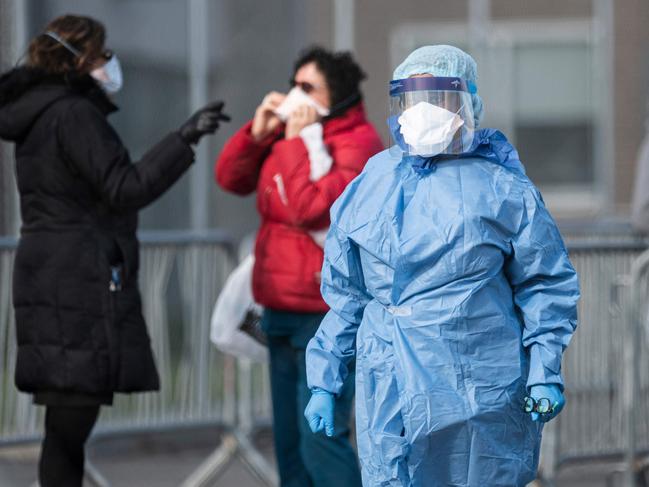
NEW YORK TO OPEN ‘SOME STREETS’ TO PEDESTRIANS
New York City, the epicentre of the US coronavirus outbreak, will close some streets to car traffic, expand footpaths and create temporary bike lanes to give New Yorkers more space to be able to go outside as lockdown measures continue.
The announcement by Mayor Bill de Blasio comes just days after city officials and the mayor himself cautioned against a proposal to open up streets to pedestrians, saying it could not be done safely in a city as dense as New York.
Mr de Blasio announced on Monday (local time) that the city will open a minimum 64 kilometres of streets to pedestrians over the next month in an attempt to reduce crowds in parks as the weather gets warmer and the outdoors become more inviting amid the coronavirus crisis, reports the New York Post.
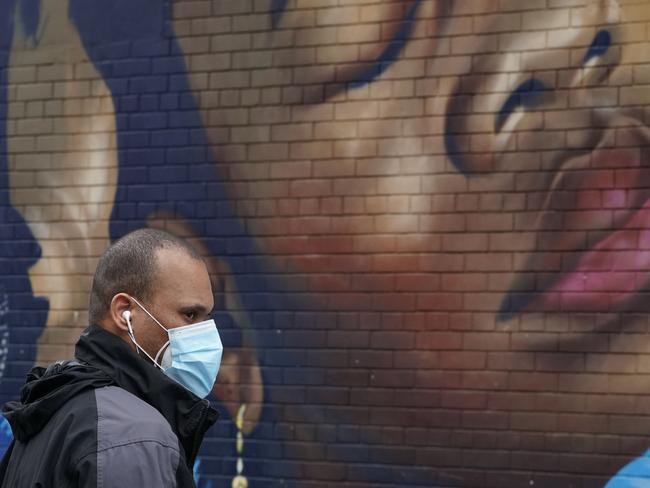
Mr De Blasio, speaking during a conference call with reporters, said that the goal is to eventually get to 160 kilometres of open streets as the coronavirus pandemic continues.
“We will focus first on streets in and around our parks,” Mr de Blasio said, adding, “That’s an obvious opportunity to open more space.”
In some cases, de Blasio said, footpaths will be expanded.
The mayor’s announcement ends a month-long battle with the City Council, which has been calling for Mr de Blasio to create space for socially distant walking and biking.
City Council Speaker Corey Johnson and Councilwoman Carlina Rivera previously backed legislation that would require de Blasio to close or modify up to 120 kilometres of city streets to make room for pedestrians during the coronavirus crisis.
“We have reached an agreement with Speaker Johnson and the Council,” de Blasio said as he made the announcement on Monday.

Mr De Blasio has previously resisted the proposal.
Meanwhile, New York’s daily coronavirus death toll dropped to below 400, less than half of the deaths recorded at the height of the coronavirus crisis in the state’s hospitals.
Governor Andrew Cuomo said the 367 deaths from the coronavirus that he reported on Sunday were “horrific,” but the number was less than half the nearly 800 deaths that occurred in a single day during the pandemic’s peak in New York. It is the first time this month that the statewide daily death toll has been below 400.
He also reported that the number of hospitalisations, which still topped 1000, and the number of individuals put on a ventilator had dropped as well.
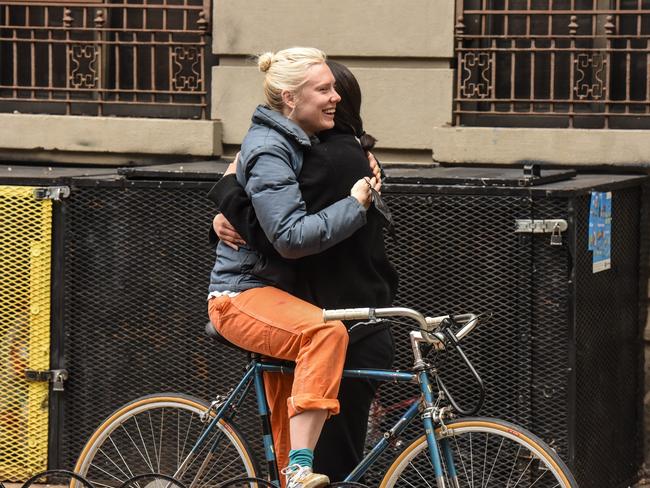
BORIS: CORONAVIRUS AN ‘INVISIBLE MUGGER’
Meanwhile, British PM Boris Johnson has called coronavirus the “invisible mugger” as he said the UK was almost at the end of the first phase in its battle against the disease.
The British Prime Minister made his first public statement since going off work three weeks ago and ending up in intensive care after he came down with the deadly virus.
He warned Britain had to maintain lockdown rules to prevent a deadly second wave.
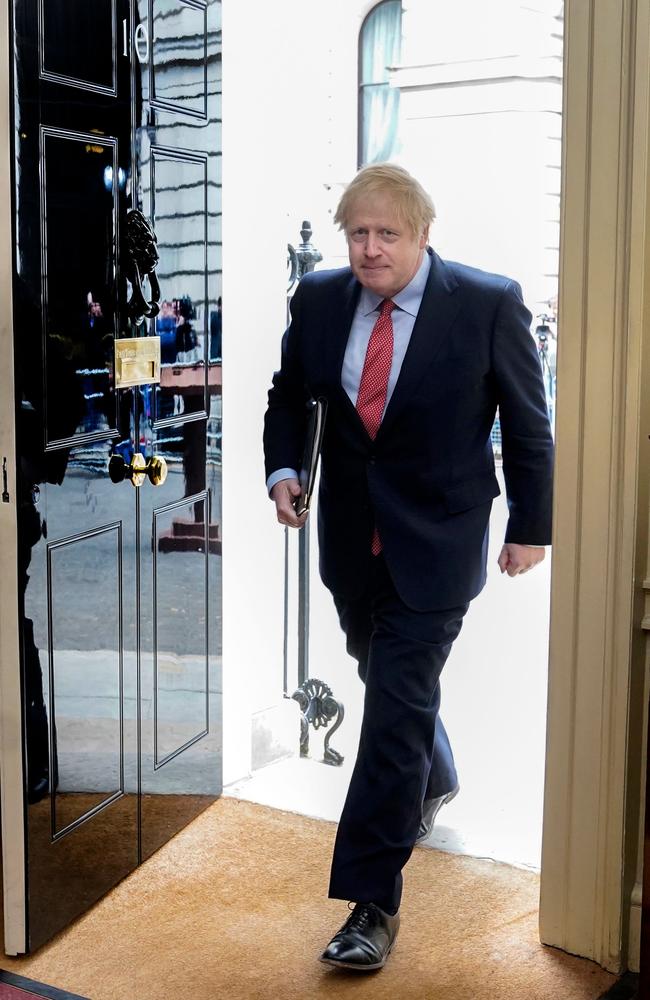
A much improved Mr Johnson, 55, had colour back in his face and his trademark shaggy locks were swinging in the breeze as he rallied the country outside Number 10 Downing Street on Monday (local time).
“If this virus were a physical assailant, an unexpected and invisible mugger – which I can tell you from personal experience, it is – then this is the moment when we have begun together to wrestle it to the floor,” he said.
“And so it follows that this is the moment of opportunity, this is the moment when we can press home our advantage, it is also the moment of maximum risk.
“I know there will be many people looking at our apparent success, and beginning to wonder whether now is the time to go easy on those social distancing measures.”
Mr Johnson prepared Britain for a longer term lockdown, saying he would not waste the hard work done so far to flatten the curve.
But he vowed to be transparent about how decisions were made and was also willing to bring in opposition parties after new Labour leader Sir Keir Starmer landed some blows in parliament last week.
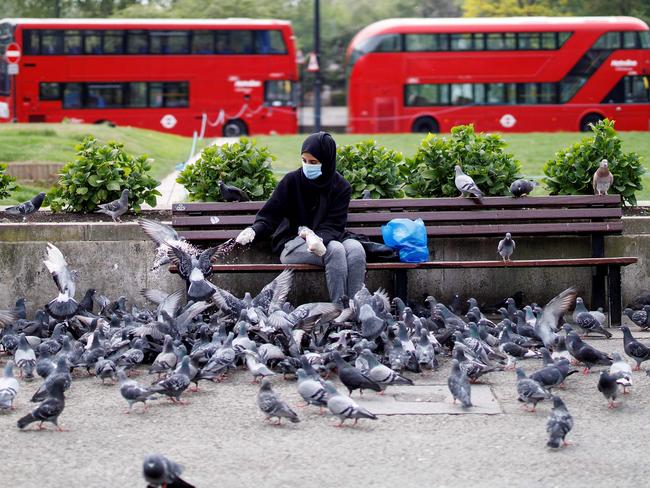
Foreign Secretary Dominic Raab stood in for Mr Johnson while he was sick, but there were concerns that the government was rudderless as he did not have full control.
Mr Johnson also urged people to come together like they had behind 99-year-old war veteran Captain Tom Moore, who had raised $A60 million for the National Health Service by doing 100 laps around his nursing home.
Britain has had 20,795 COVID-19 deaths so far, but the real figure could be more than twice that once nursing home deaths were counted.
There were only 413 deaths announced in the latest daily figures, the lowest since March.
Businesses have been demanding an exit plan for the country’s lockdown, which has cost the economy $A5 billion per day.
Mr Johnson said he understood the frustration of businesses and those who were worrying about their jobs.

“I know it is tough. And I want to get this economy moving as fast as I can, but I refuse to throw away all the effort and the sacrifice of the British people and to risk a second major outbreak and huge loss of life and the overwhelming of the NHS,” he said.
“And I ask you to contain your impatience, because I believe we are coming now to the end of the first phase of this conflict and despite all the suffering we have so nearly succeeded.”
The UK hospital system has coped with the virus, with intensive care beds increased and new Nightingale hospitals barely used. There have also been enough ventilators for patients.
However, there has been a critical shortage of protective equipment for medical staff, with complaints of poor distribution and delays on new shipments.
Families of some medics who have died of coronavirus have complained their loved ones were not given the correct protective equipment.
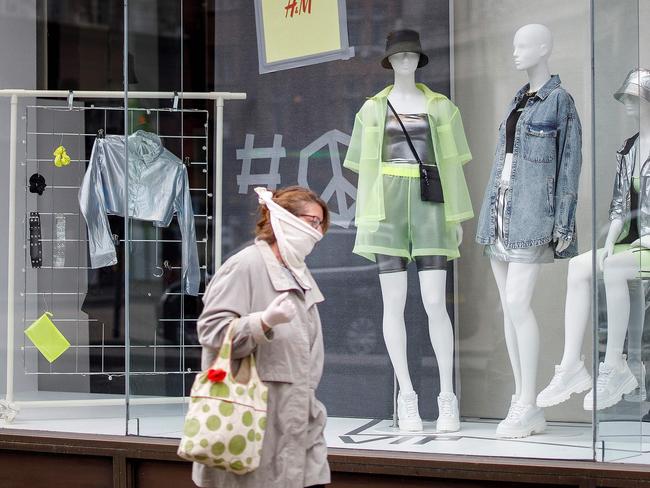
MORE THAN TWO MILLION AUSSIES DOWNLOAD TRACING APP
Meanwhile, more than two million Australians have downloaded the coronavirus tracing app within a day of its release, far exceeding expectations.
The tech community has swung behind the new contract tracing software after analysing it with privacy concerns in mind.
The COVIDSafe app is designed to help health officials identify people who have come into contact with somebody infected with the disease.
The voluntary app became available for download on Sunday evening and has the backing of doctors, nurses, businesses, bankers and travel agents. Health Minister Greg Hunt was thrilled with the uptake.
Having initially expected the figure might hit one million within five days, it got to the mark in five hours, he said.
The figure rose to two million late last night.
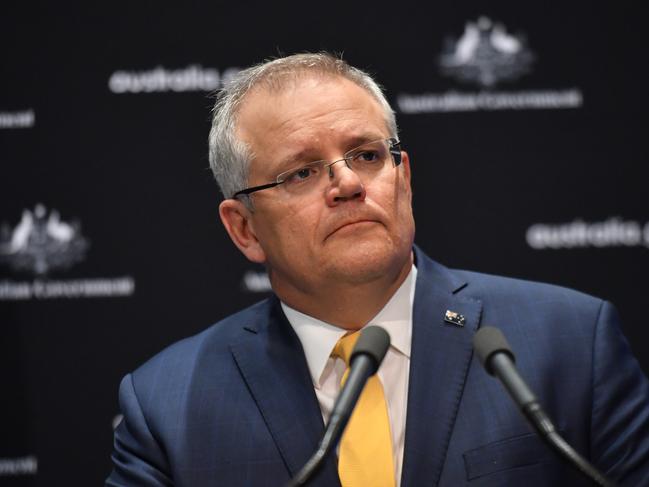
“This effort will help protect ourselves, our families, our nurses and our doctors,” he tweeted.
The government ultimately wants at least 40 per cent of the population on board. Software developer Matthew Robbins says the general consensus among his peers is that the app is fine.
“It’s totally fine to install and it’s a good public service to do so,” he said.
“If the tech community is pulling it apart and critically analysing it and hopefully effectively communicating what we’re seeing, I do think that people will uptake it.
“We’re really being a counterbalance to what (the government) are saying.”
Atlassian co-founder Mike Cannon-Brookes urged the tech community to “turn the … angry mob mode off” and instead help the government fight misinformation.
Chief medical officer Brendan Murphy said the commonwealth would never have access to the data collected.
“We have locked this down so completely, so thoroughly with the biosecurity rule, with legislation that is coming, the only people who can access the data are the state and territory health officials,” he told reporters. “We have a compact with the Australian public: this app will only ever be used by public health officials in the purposes of contact tracing.”
And Mr Hunt confirmed people concerned about privacy could use a fake name to register.
The other personal information collected is a phone number, age range, and home postcode.
However, some federal politicians still hold privacy concerns. Nationals backbencher Barnaby Joyce won’t download the app until he receives a briefing from the responsible minister.
One Nation leader Pauline Hanson is also against the idea.
Privacy Commissioner Angelene Falk said safeguards were in place to protect personal information collected through the app, and her office would watch its implementation closely.
The health department anticipates publishing the source code within two weeks, after the Australian Cyber Security Centre gives it the OK.
Legislation making misuse of the data collected via the app a jailable offence won’t be taken to federal parliament until May.
Labor has indicated it is inclined to back this.
HOW HOME SCHOOLING WILL AFFECT KIDS
Two terms of distance learning at home during the coronavirus pandemic means students from lower socio economic backgrounds lose more than a month of maths and reading learning, according to new research.
About 46 per cent of all Australian children are at risk of adverse effects on their educational outcomes, nutrition, physical movement, social and emotional wellbeing by being “physically disconnected” from school, University of Tasmania researchers found.
The Peter Underwood Institute team examined how learning at home during COVID-19 impacts vulnerable Australian students and concluded the home-based, online model was “especially” harming children in early years and in vulnerable groups.
After studying the impact of distance learning during the last two weeks of term one, the researchers said it was “already clear” that nationally children were experiencing “learning losses”.
“This means that there will not be the expected cognitive gains for these students over the period of learning at home,” the study said.
“These losses will cause a delay in … achievement in some students and result in others being lost to the education system.”
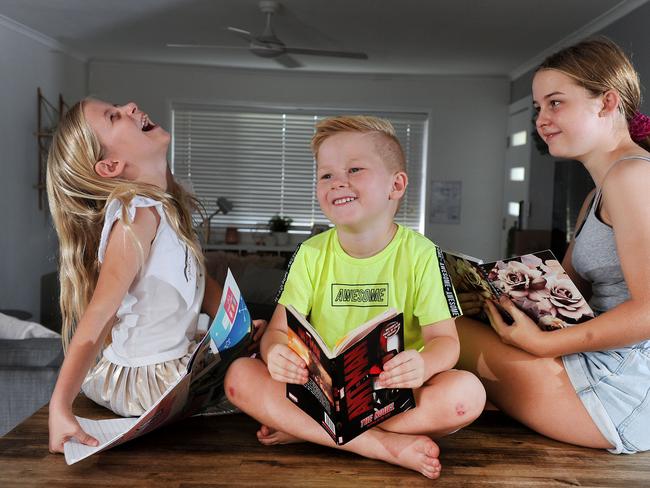
Meanwhile, researchers at the Mitchell Institute at Victoria University have published a scathing assessment of Australian schools’ preparedness for distance learning ahead of the coronavirus shutdown.
“Most schools across Australia were completely unprepared for the coronavirus and for moving to virtual learning,” the study said.
“Unequal internet access is just the tip of the iceberg of the challenges some students face in doing their schooling online.”
The study identified five key “divides” schools needed to overcome to help all children learn at home: material resources, digital and IT access, personal skills of the student, parental support and ability of the student to adjust to the new arrangement.
The researchers said about one in six Australian children lived in low income households, where parents might not have the resources, skills or experience to support at-home learning.
Low socio economic students or children with complex needs would lose about six weeks of numeracy and four weeks of reading learning if distance education continued for two terms, researchers said.
The study found low socio-economic students were less likely to have a proper desk, books, dictionaries and other resources, while in low income households 41 per cent of mothers and 44 per cent of fathers had not completed school.
Meanwhile the University of Tasmania researchers said a “targeted strategy” of physical re-engagement at school could mitigate many of the negative impacts on learning.
Students in preschool to Year 2 should be prioritised for full-time on site school attendance, while personalised engagement plans would be needed for students not physically at school with limited online capacity.
Originally published as Coronavirus inquiry hears hit on economy faster than Great Depression

